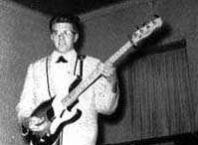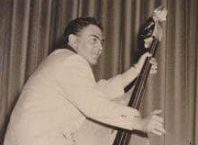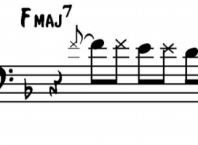…and the problem of inconsistent nomenclature
Because slap technique was mainly used in music styles that were not commonly written, there exist different names for the same patterns. In order to have some consistency and to make this website easier to follow, I have analyzed the most commonly used patterns.
In the past, music journalists and players rarely wrote about slap technique. When they did, they only counted slaps that were made by the palm* alone, or by the string and the palm together. When the string is pulled, it produces not only the normal tone, but also a backslap when it hits the fingerboard. When counting slaps with regard only to the palm, there is no way of quantifying these backslaps. For example, thousands of early Jazz and Rockabilly records featured bassists who used a slap technique in which the palm was completely absent; a technique still considered to be slap bass.
In the following selection of techniques, both backslaps and palmslaps are counted.
Single slap (boom) – Using the fingers to pull the string causing it to hit the fingerboard, producing a backslap.
Double slap (boom-tack) – A single slap plus one slap by the palm. Depending on the rhythm, there’s a slight difference between the straight and swing feel.
With more complex patterns (that include more than one palm slap) there are more variations:
Triple slap
- gallop (boom-pause-tack-tack): This technique was sometimes called “double slap”. However, because we are counting both palmslaps and backslaps, it is part of the triple slap category. The gallop includes a single slap and two palm slaps (like the triplet slap, but in a different rhythm). There’s a difference when playing it in the straight or swing feel.
- triplet (boom-tack-tack): Because this is a very precise musical term that describes three notes of equal length, there is no confusion about it.
- drag (tack-tack-boom): This one could fall into its own category due its very distinguished sound. However, it still includes two palm slaps and one single slap, which makes it part of the triple slap category. This pattern is possible to play in a few different variations. The most common are: fingers only, palm only, palm with fingers, and thumb with palm.
Quadruple slap (boom-tack-tack-tack) – This is also a very precise term, because it uses one single slap and three palm slaps, so there’s no confusion about this one either. It is possible to play a quadruple slap using two double slaps with the second tone muted, which is the pattern that Willie Dixon made famous (boom-tack-mute-tack). Played well, the muted tone acts as a percussive sound.
Most of the other patterns (like rumba, odd time signatures, double stops, chords, double handed slap, etc.) are combinations or variations of the ones mentioned above.
There are a few exceptions that don’t fit exactly into any category. For example, Milt Hinton often used regular pizzicato technique for the tone (without backslap) and then palmslapping afterward.
The goal of this guide is to aid in communication, not to limit the music in any way.
This is not a definite list of slap patterns that exist. Detailed analyses of all used slap patterns will be available in an upcoming instructional slap bass book.
*Different bassists use different parts of their hand to slap the fingerboard to make a percussive sound without a tone. I’m using the term palm in order to describe any slap produced without a finger pulling the string. Sometimes that’s just the slap with the fingers, sometimes a palm, sometimes a thumb and some patterns use a combination.





This is all news to me. Didn’t know slap bass was a “thing.” This website and these articles are opening up my eyes to a whole new way of playing the bass. This article was especially helpful. Keep the knowledge flowing, please.